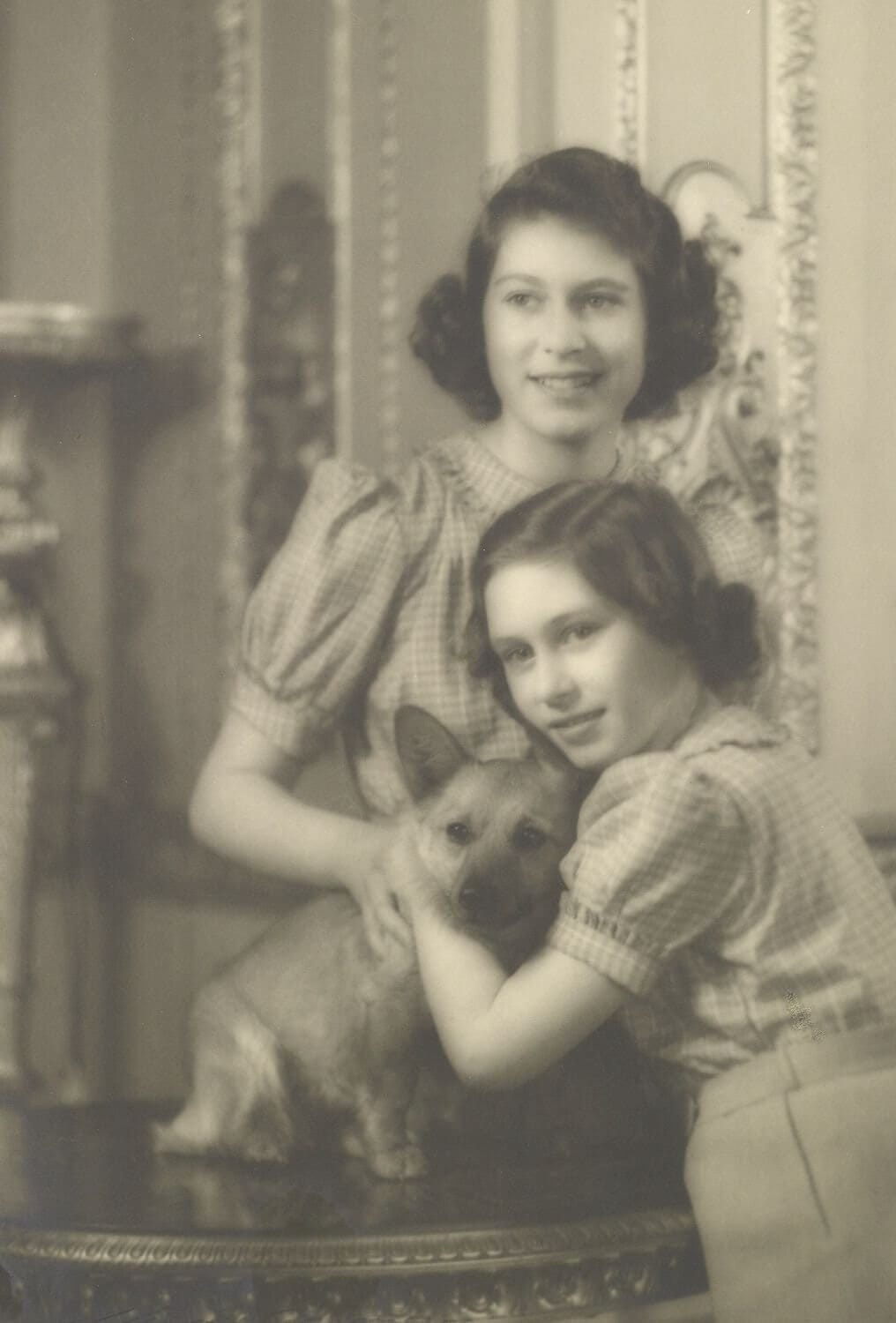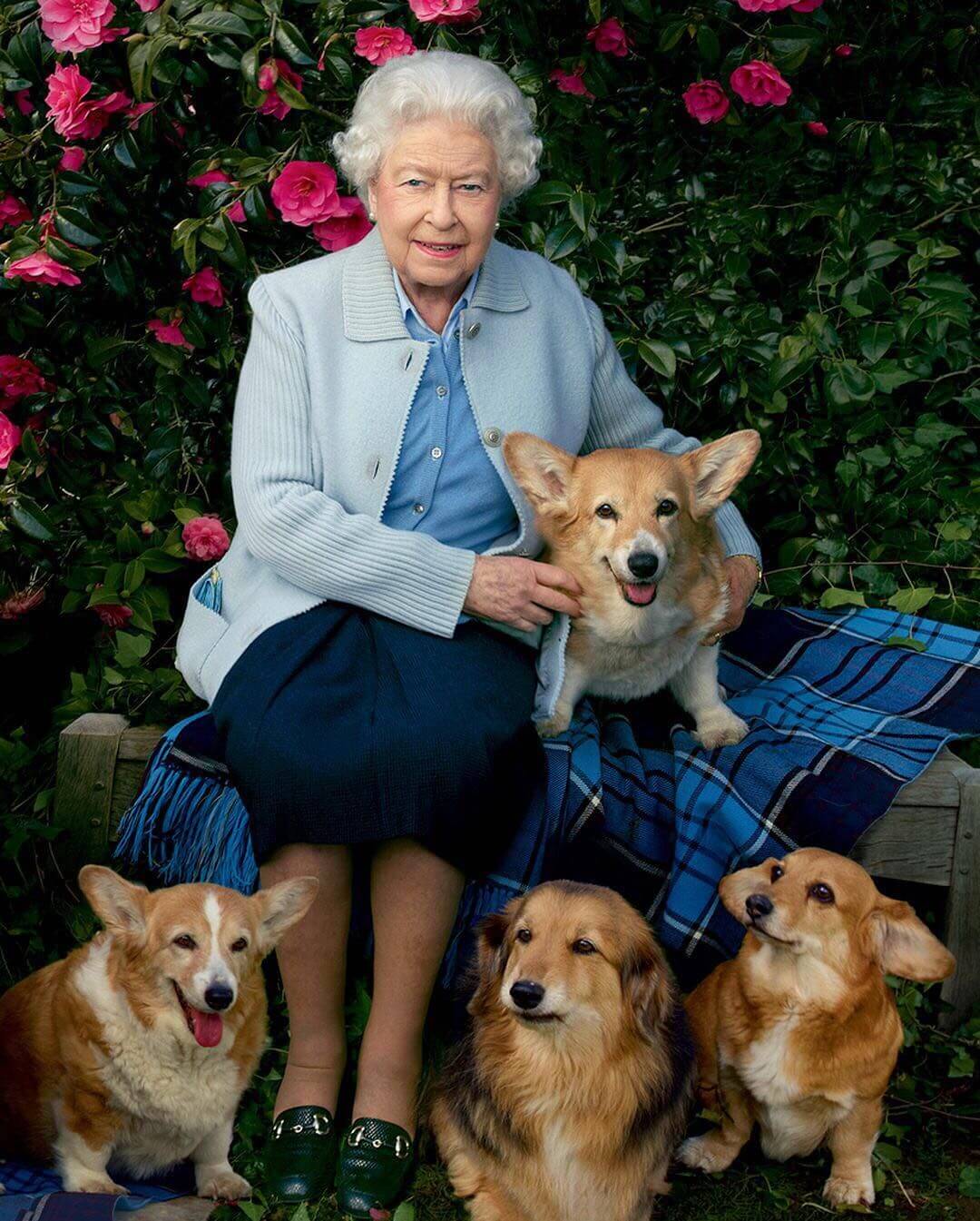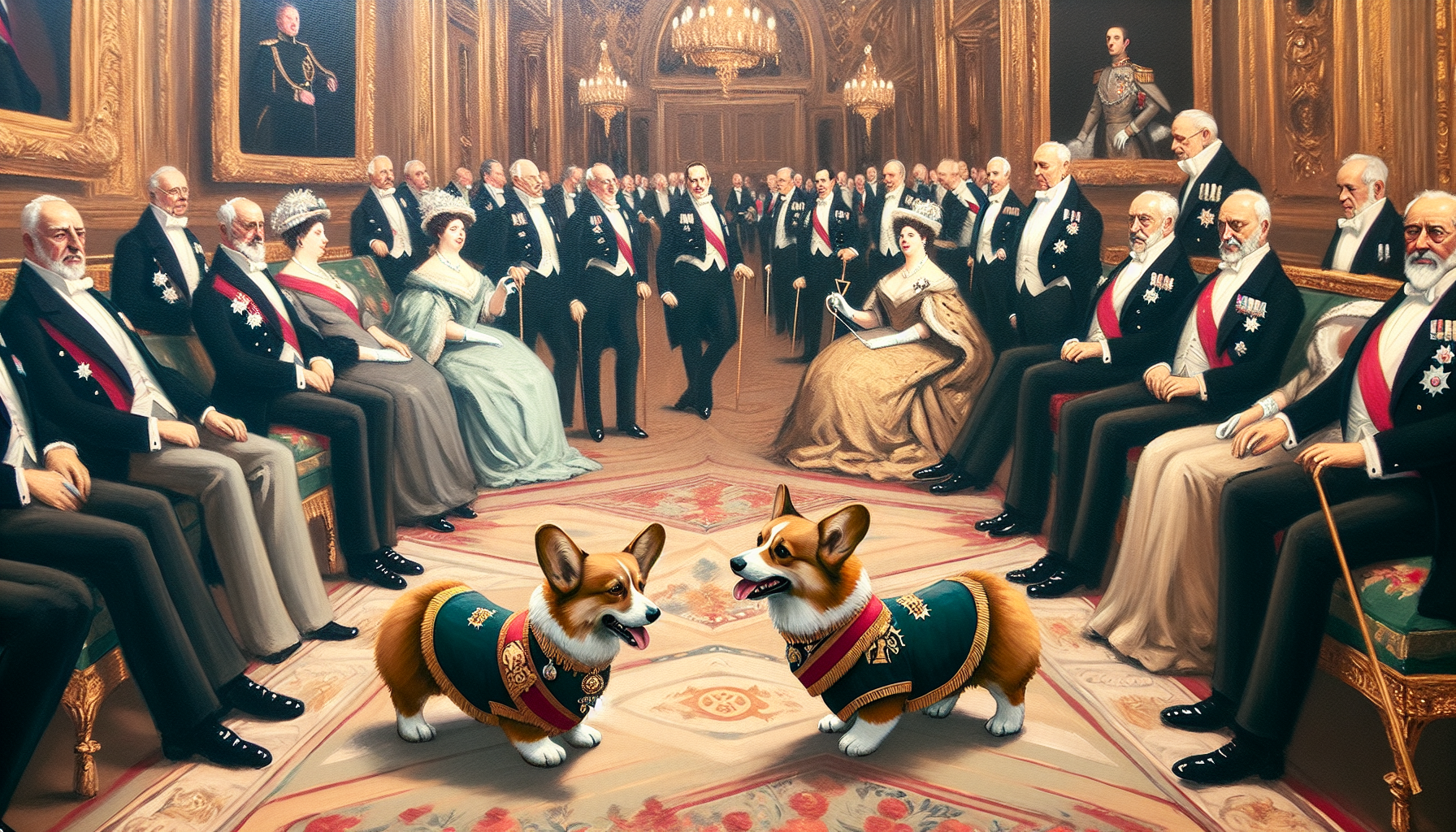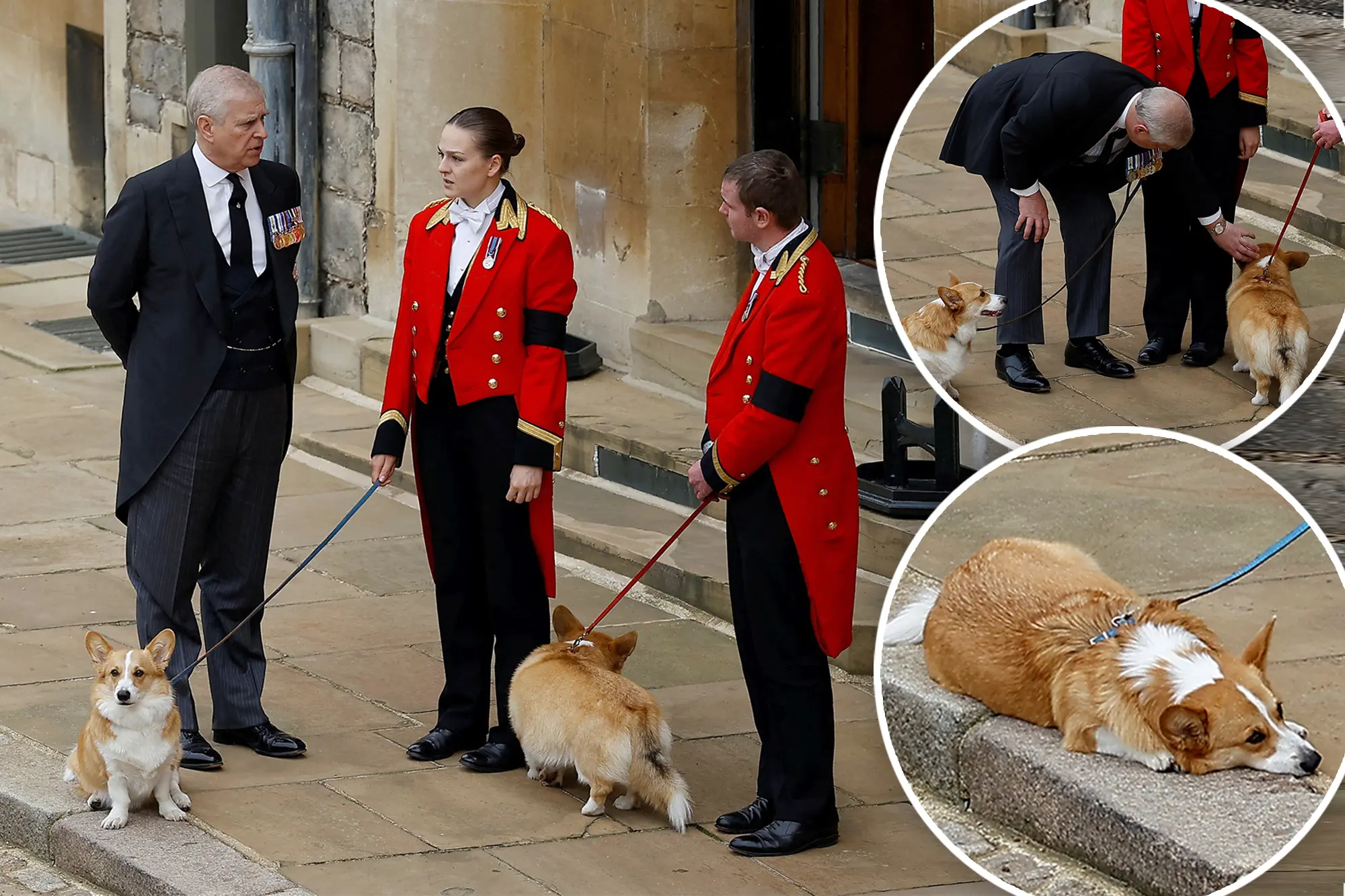Uncovering the Royal Companions: How Many Corgis Did the Queen Have?
Queen Elizabeth II had over 30 corgis throughout her reign. These royal corgis weren’t just for show; the Queen actively participated in their care.

I figured I would take a break from writing about our experience with our pup, Monty, and focus on the woman who popularized corgis. That's right, Queen Elizabeth II!
Queen Elizabeth II had an undeniably special bond with her Pembroke Welsh Corgis, owning over 30 throughout her lifetime. This article unravels the tale of these royal companions, answering the question of “how many corgis did the queen have?” while offering not just numbers but a glimpse into a royal tradition steeped in personal affection and a constant presence by the Queen’s side.
Key Takeaways
- Queen Elizabeth II had over 30 corgis throughout her reign, starting with a corgi named Dookie to the last ones, Muick and Sandy—these dogs were a royal symbol and a testament to her love for the breed.
- These royal corgis weren’t just for show; the Queen actively participated in their care, including a special diet and safety measures, showcasing a genuine, personal bond with her dogs.
- After the Queen’s passing, her beloved corgis Muick and Sandy found a new home with Prince Andrew and Sarah Ferguson, ensuring the royal corgi legacy would be continued with love and care.
Counting the Queen's Corgis

Throughout her reign, Queen Elizabeth II’s affection for her corgis was evident to the world. With over 30 of Queen Elizabeth’s corgis gracing the halls of Buckingham Palace over the years, these vivacious canine companions became synonymous with the Queen’s public image. But these weren’t just any corgis; most were the proud descendants of a single, special dog, illustrating a regal lineage that became nearly as iconic as the monarch herself. Indeed, the Queen’s corgis were more than just pets; they were an embodiment of her time as monarch, a moving testament to her love for the breed.
The Legacy Begins with Dookie
But where did this royal affinity for Pembroke Welsh Corgis begin? It all started in 1933, when King George VI brought home the first royal corgi for the family, Dookie, setting the stage for what would become a longstanding tradition within the British royal family.
A Lifelong Passion for Pembroke Welsh Corgis
Yet it was a young Princess Elizabeth who truly sparked the royal corgi craze, while her sister Princess Margaret also shared a love for dogs. On her 18th birthday, Princess Elizabeth received her own Pembroke Welsh Corgi puppy named Susan, a gift that would ignite a lifelong passion. Susan didn’t just become a beloved companion; she initiated a royal canine dynasty, accompanying the then Princess Elizabeth from the very beginning of her marriage and establishing a lineage that would grace the palace for decades.
Final Tally at the Time of the Queen's Death
At the time of her passing, the Queen’s love for her corgis remained undiminished. Left in her beloved company were two corgis, one dorgi (a corgi-dachshund mix), and one cocker spaniel, a testament to her lifelong affinity for her canine companions. Though the palace was without the pitter-patter of new puppies, as the Queen had decided to stop breeding corgis, the remaining four dogs — Muick, Sandy, Lissy, and Candy — continued to embody the Queen’s love for her pets.
The Royal Corgi Dynasty

The influence of Queen Elizabeth’s corgis extends far beyond the palace gates. Thanks in large part to the matriarch Susan and her descendants, the Welsh corgi climbed the ranks to become the 11th most popular dog breed in the United States, captivating the hearts of dog lovers across the globe.
Susan: The Matriarch of the Royal Corgi Line
Susan was more than just a pet; she was the matriarch of the royal corgi lineage, a true companion to the Queen. Her arrival as the young princess’s 18th birthday gift marked the beginning of an extraordinary relationship between the Queen and her Pembroke Welsh Corgis. Susan’s role within the royal family was significant; not only did she accompany Queen Elizabeth II in public, but she also became the progenitor of the Queen’s line of corgis and dorgis, ensuring her legacy would continue for generations.
Such was the Queen’s affection for Susan that she designed a headstone for her, which stands at Sandringham House as a monument to her cherished corgi.

From Windsor Castle to Balmoral: The Corgis' Royal Residences
The Queen’s corgis enjoyed a life of luxury, residing with her in royal estates from Windsor Castle to Balmoral. These were not just pets, but members of the royal household, with Windsor Castle and Balmoral providing the backdrop for their privileged lives. The Queen’s affection was unmistakable; for instance, she named one of her corgis Muick after Loch Muick on the Balmoral estate, revealing a deep personal connection to these beloved dogs.
The royal corgis even had their own dedicated burial site at Sandringham Estate, a poignant testament to their place in the Queen’s heart.
Caring for Her Majesty's Canine Companions

The Queen’s relationship with her corgis was far from ceremonial; she was intimately involved in their daily care. Feeding them, walking them, and ensuring their well-being, the queen mother was a hands-on owner who cherished every moment with her loyal companions. In fact, these pets were truly queen owned, reflecting the deep bond between them and their royal caretaker.
A Menu Fit for a Queen's Corgis
Even their diet was fit for royalty. The royal kitchens prepared lavish meals for the Queen’s corgis, featuring a smorgasbord of rabbit, liver, chicken, rice, and beef and served up on a literal silver platter.
Every meal was meticulously crafted, taking into account the special dietary needs of each dog, ensuring a bone-free feast for the safety and delight of these regal canines.
Notably, Queen Elizabeth would feed the corgis herself on a typical afternoon. I had no idea she directly took care of the dogs this way. It's so heartwarming!
Training and Pampering at the Palace
In addition to their gourmet diets, the Queen’s corgis received the utmost care and training within the palace walls. Their bond with the Queen was further solidified by her personal involvement in their care, a responsibility she did not delegate to royal staff. During dress fittings, for example, she used a magnet to collect stray pins — a simple precaution that spoke volumes of her concern for their safety.
The training of the corgis, entrusted to Windsor Castle’s gamekeepers, ensured that they were well-behaved members of the royal household.
The Royal Corgis' Lasting Impact

The royal corgis have left an indelible mark on the world, humanizing the Queen’s image and becoming cultural icons in their own right. Their likeness has been immortalized in statues, photographs, and even featured in significant events like the 2012 London Olympics opening ceremony.
Princess Diana once described them as a ‘moving carpet’ at the Queen’s side, a testament to how they strengthened her public image, often accompanying her at official events and on tours. Through their public appearances, the corgis helped to humanize the monarchy, making it seem more approachable and relatable.
Breaking the Ice: The Corgis as Diplomatic Aides
In the grand rooms of Buckingham Palace, the Queen’s corgis often played the role of icebreakers. Their presence provided a point of conversation, lightening the mood in diplomatic settings. The corgis enabled the Queen to present a more approachable and personable aspect of her monarchy, helping her ease into conversations with dignitaries and strangers alike. These canine diplomats were present during her travels and played a role in her diplomatic interactions, showcasing their significance beyond mere pets.
A Comfort During Turbulent Times
But the corgis’ role extended beyond official duties; they were a source of comfort during the Queen’s personal challenges. When the world faced the uncertainty of the pandemic, corgis like Muick and Sandy were highlighted as sources of great joy, contributing to the Queen’s well-being. Angela Kelly, personal assistant and senior dresser for the Queen, and others noted the corgis, particularly during this time, were seen as a ‘godsend,’ accompanying the Queen on walks and boosting her morale.
In times of personal difficulty, such as the passing of Prince Philip, the corgis stood by her as comforting presences, providing emotional support during both the quiet and tumultuous times of her reign, just as Prince William would have done.
The Succession of the Queen's Corgis

After the Queen’s death, the question on many minds was what would become of her beloved corgis. In a passing of the torch, the Duke of York, Prince Andrew, and his former wife, Sarah Ferguson, inherited the responsibility for the Queen’s remaining corgis. Muick and Sandy went to live with them at the Royal Lodge in Windsor, ensuring that the corgis would continue to be well-loved and cared for.
The Queen’s foresight in choosing not to breed more corgis in her later years meant that she could ensure they would find a suitable home after her departure, a final act of love for her cherished companions.
Prince Andrew and Sarah Ferguson: The New Guardians
The Duke of York and Sarah Ferguson stepped up as the new guardians for the Queen’s corgis, acknowledging the national importance of these dogs by confirming their commitment to providing well-trained care. Their residence at the Royal Lodge on the Windsor estate, where they continue to live together post-divorce, became the new home for Muick and Sandy.
Summary
From the young princess’s delight in a corgi named Susan to the legacy of a canine dynasty that would become a cherished part of British culture, the story of the royal corgis is a heartwarming tale that spans decades. The Queen’s faithful companions were not just a fixture at her feet; they were integral to her image, confidants in diplomacy, and a comforting presence in times of need. As we reflect on their enduring impact, it’s clear that the Queen’s corgis will forever be remembered as a symbol of her reign, and the loving care they continue to receive is a testament to their lasting legacy.
Frequently Asked Questions
How many corgis did Queen Elizabeth II have at the time of her death?
Queen Elizabeth II had two corgis, one dorgi, and one cocker spaniel at the time of her death. She had a little furry family by her side.
Who took care of the Queen's corgis after she passed away?
Prince Andrew and his former wife, Sarah Ferguson, took care of the Queen's corgis, Muick and Sandy, after her passing. They ensured the dogs were well looked after.
Did the Queen's corgis have a special diet?
Yes, the Queen's corgis had a special diet prepared by the royal kitchens with rabbit, liver, chicken, rice, and beef, customized to their dietary requirements.
Were the Queen's corgis involved in any public events?
Yes, the Queen's corgis were involved in public events, including professional photographs and the 2012 London Olympics opening ceremony. They were quite the stars!
Where are the Queen's corgis buried?
The Queen's corgis are buried at Sandringham Estate, where they have their own dedicated burial site.

